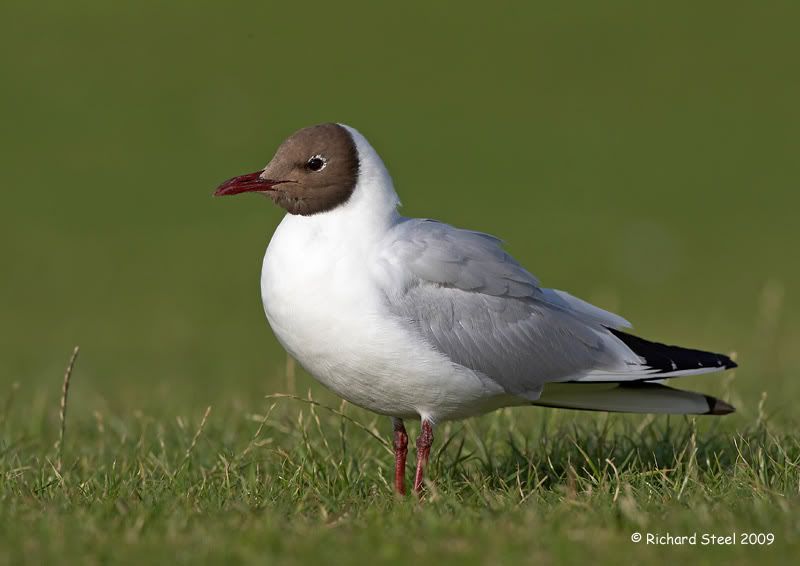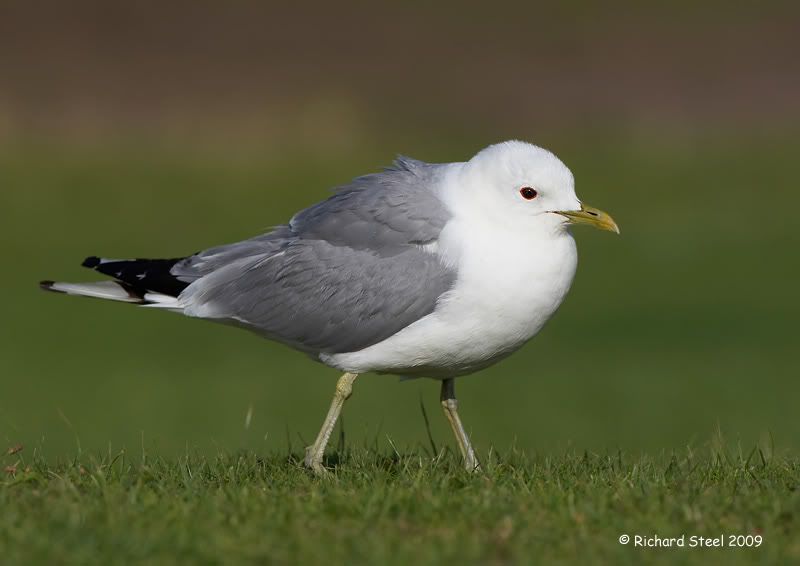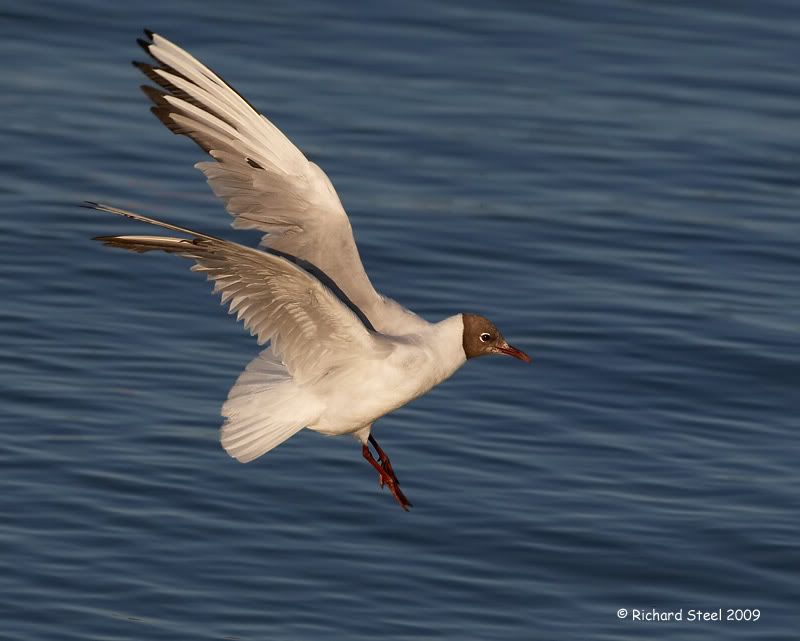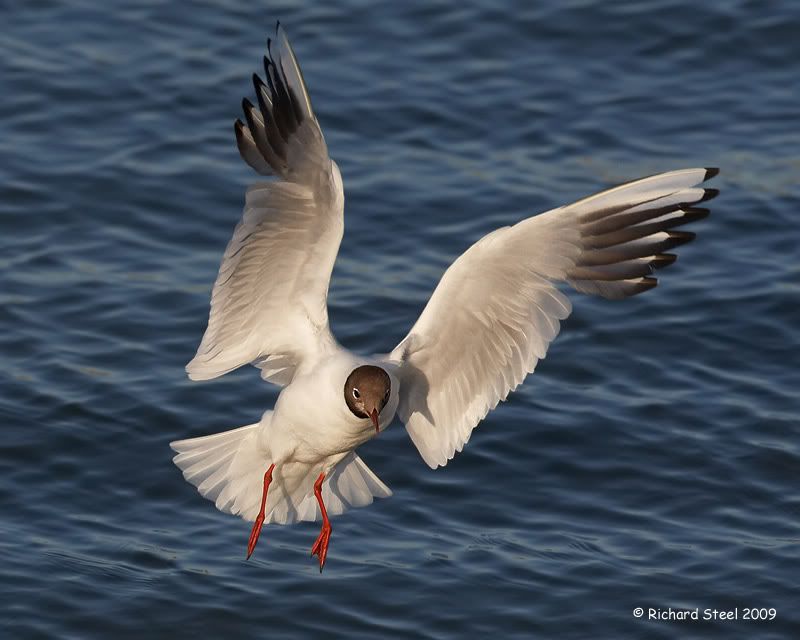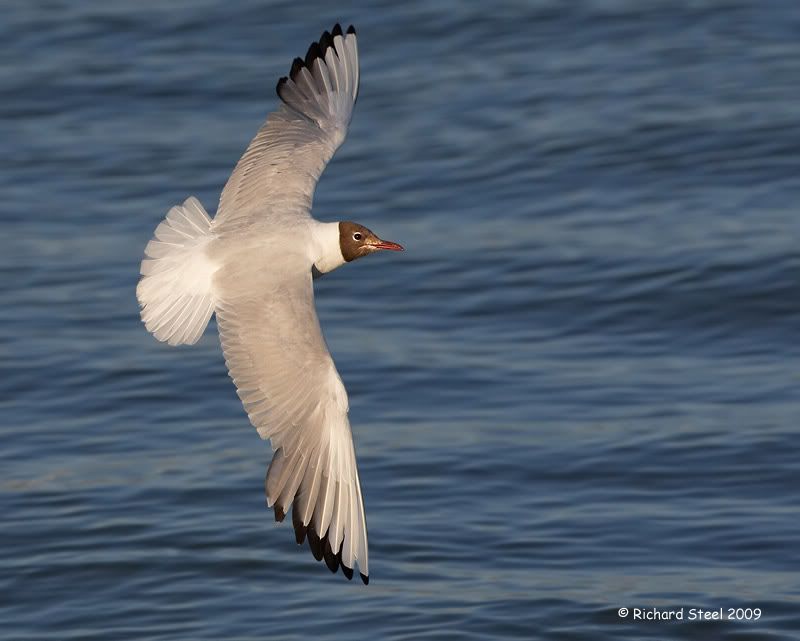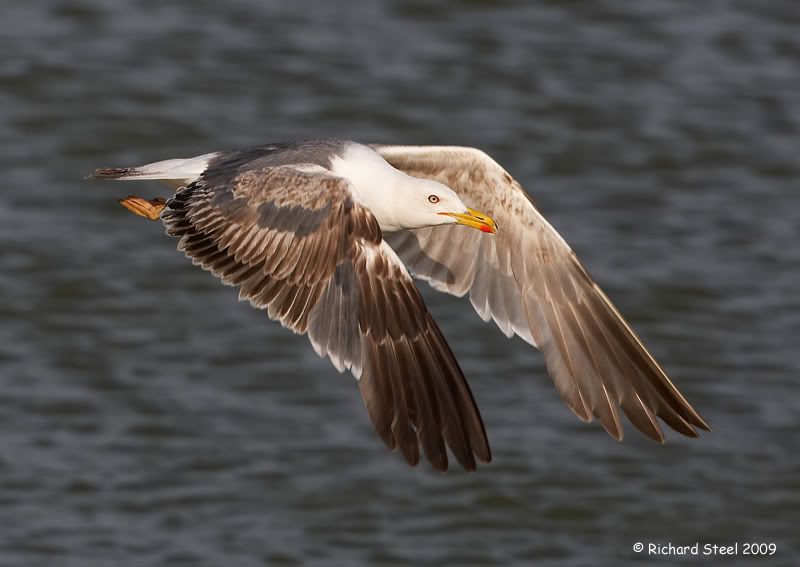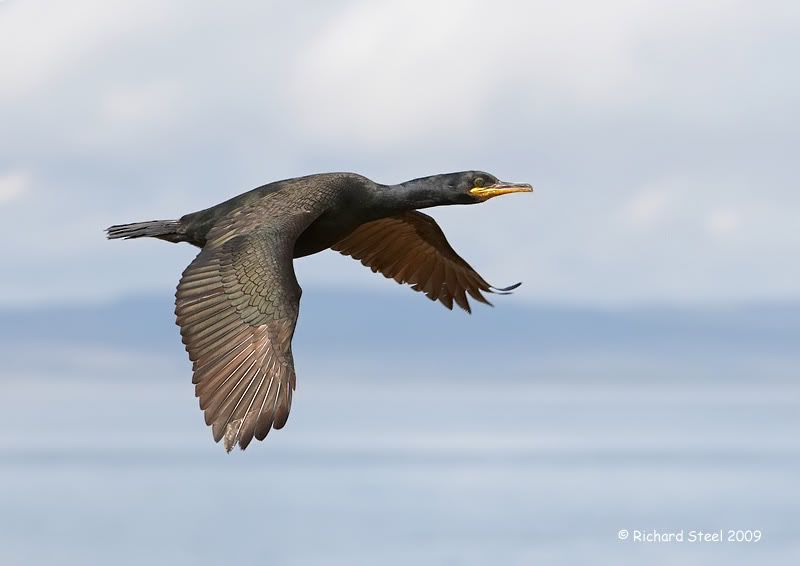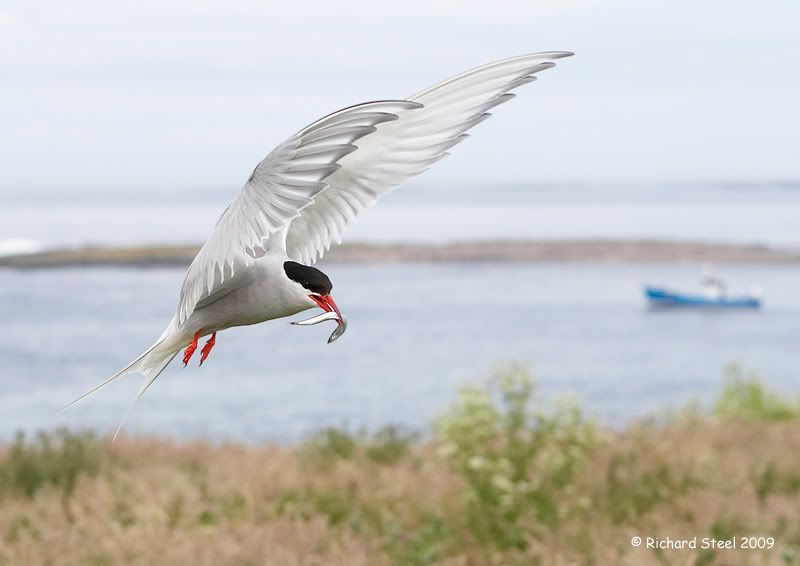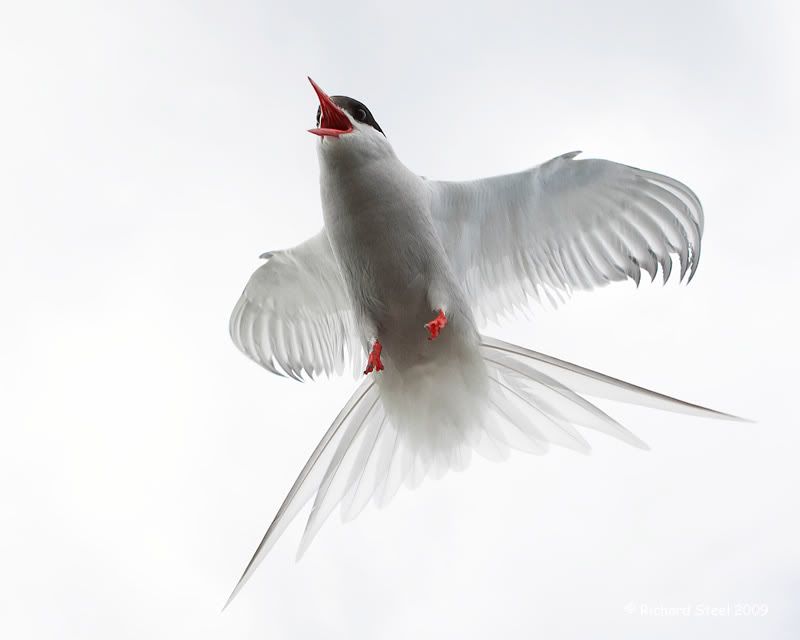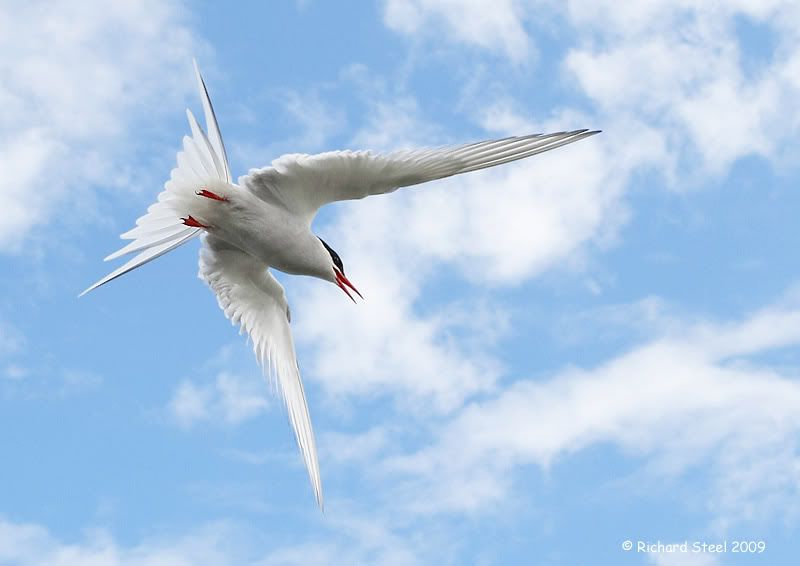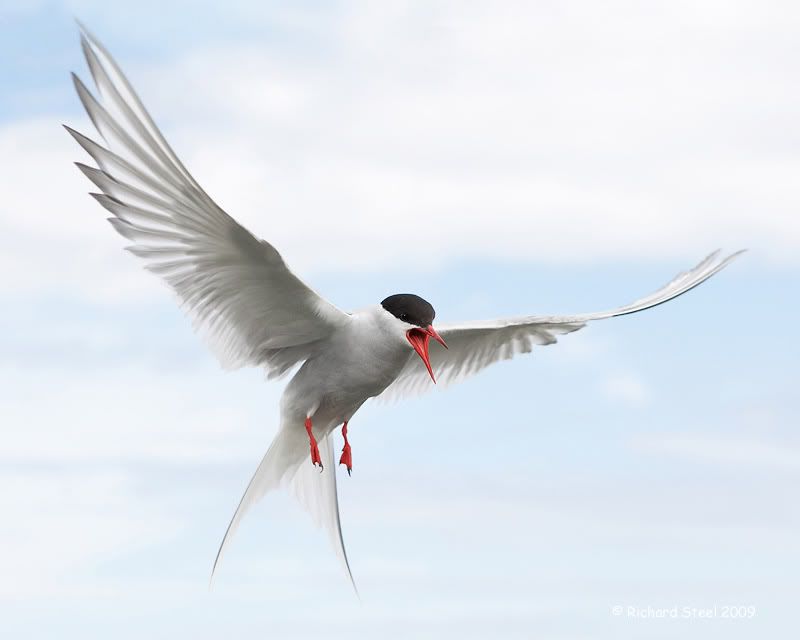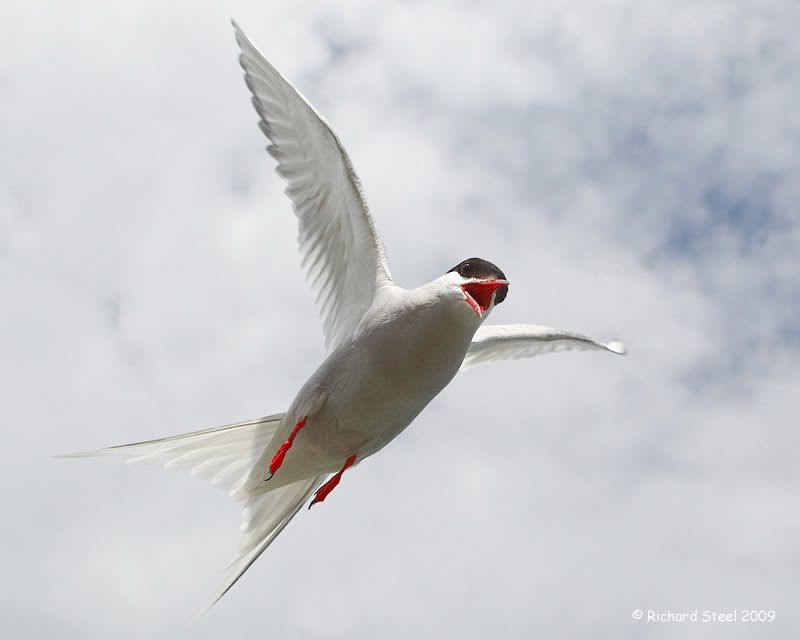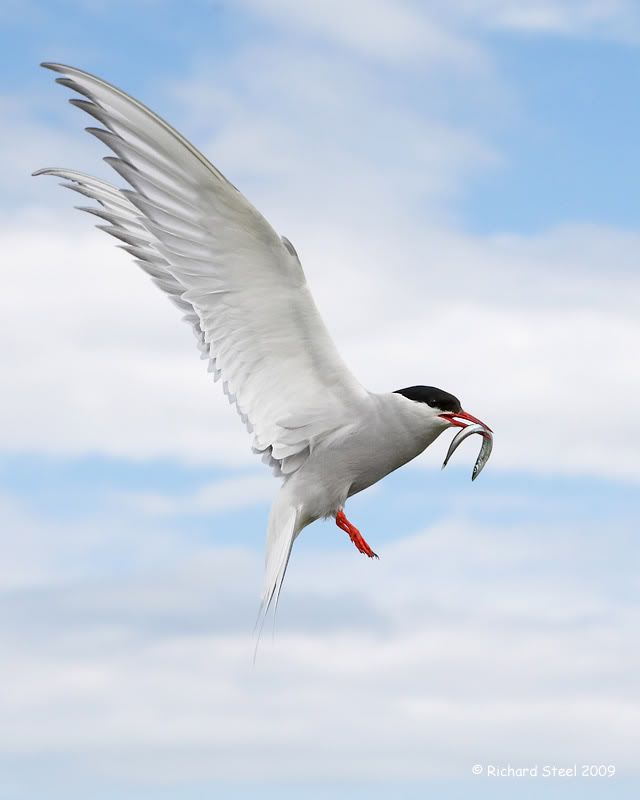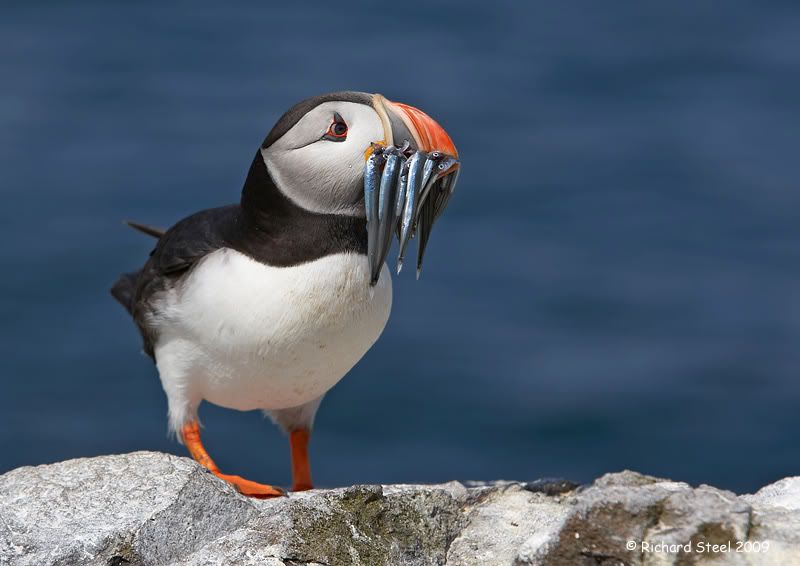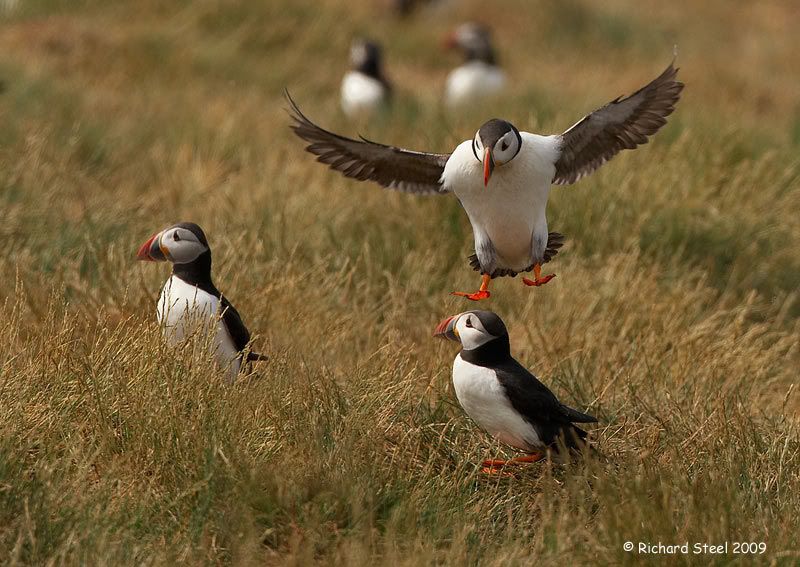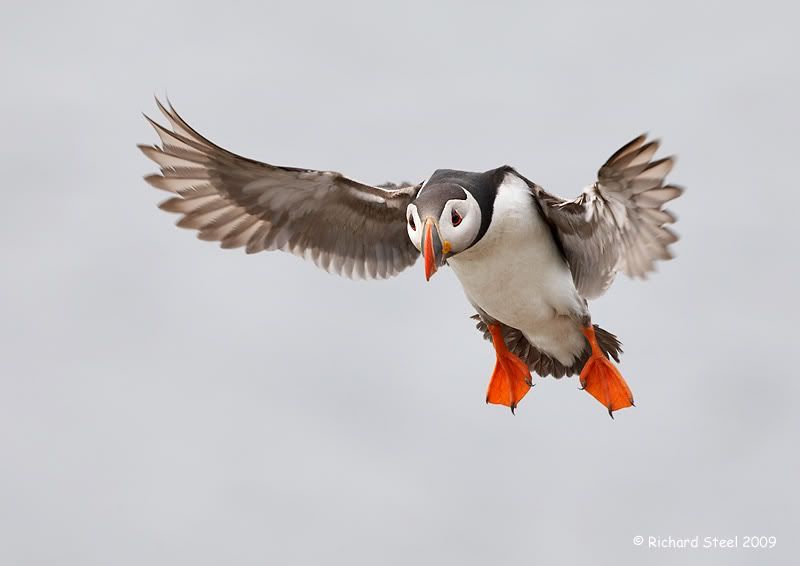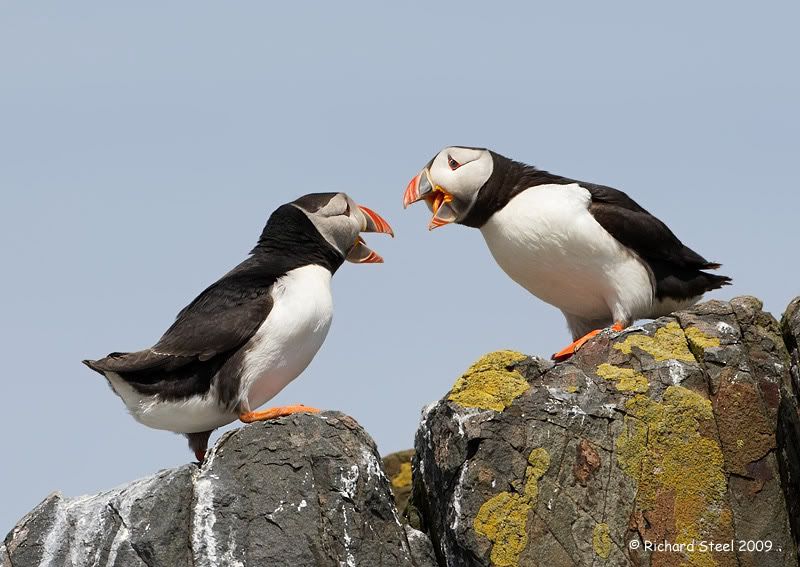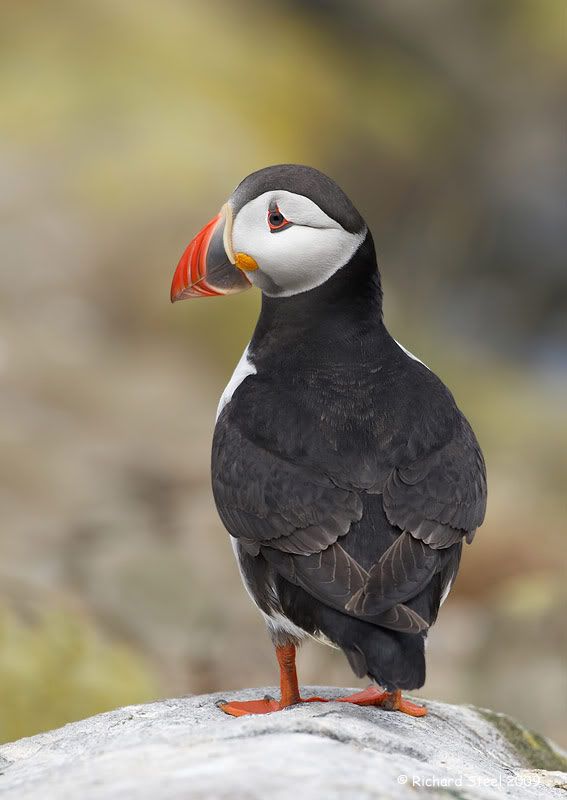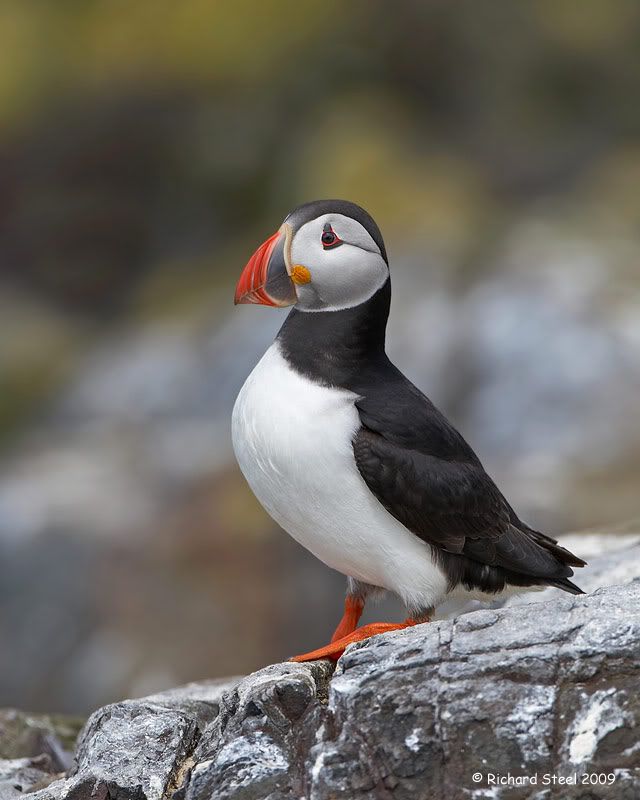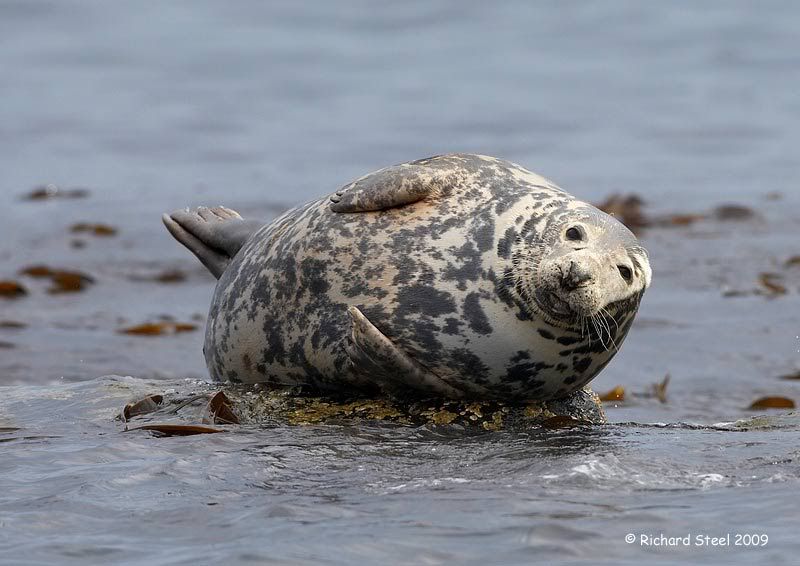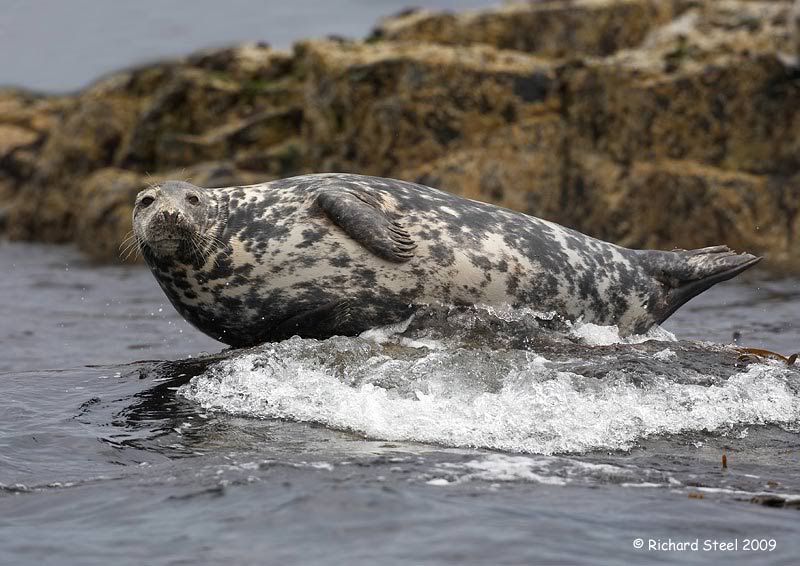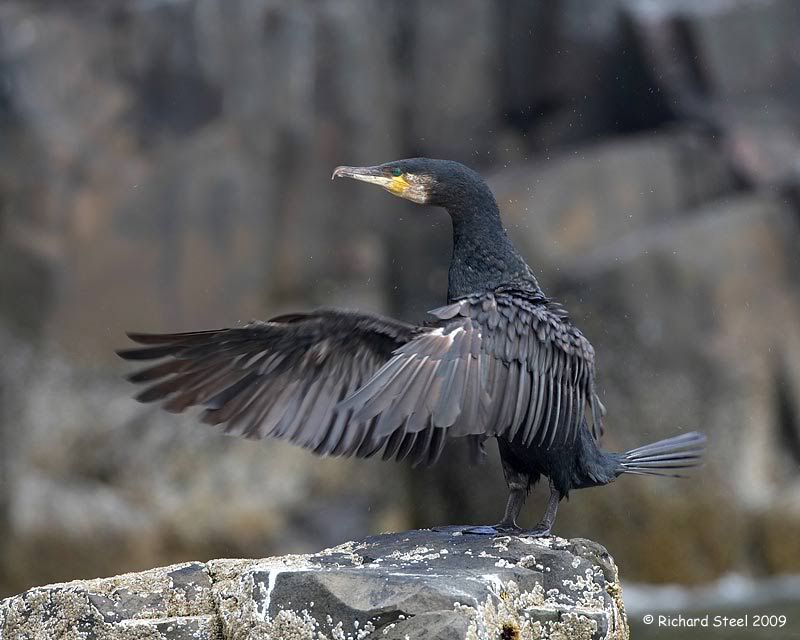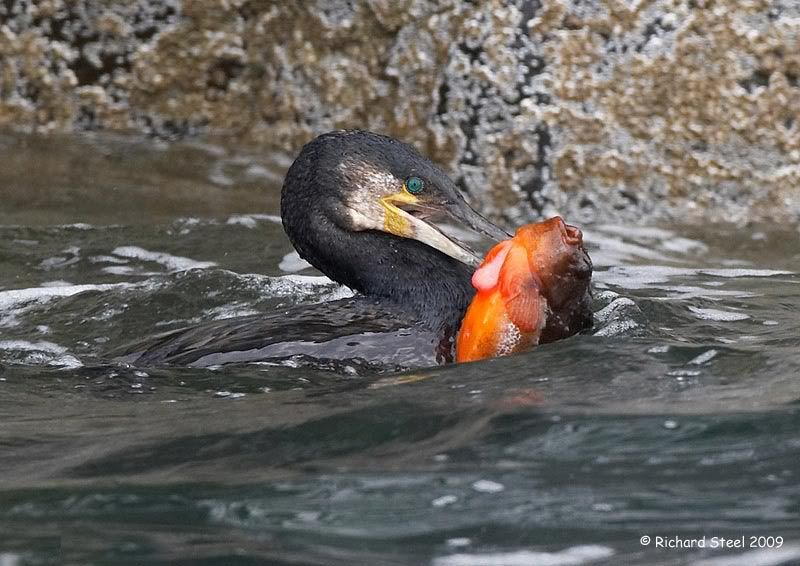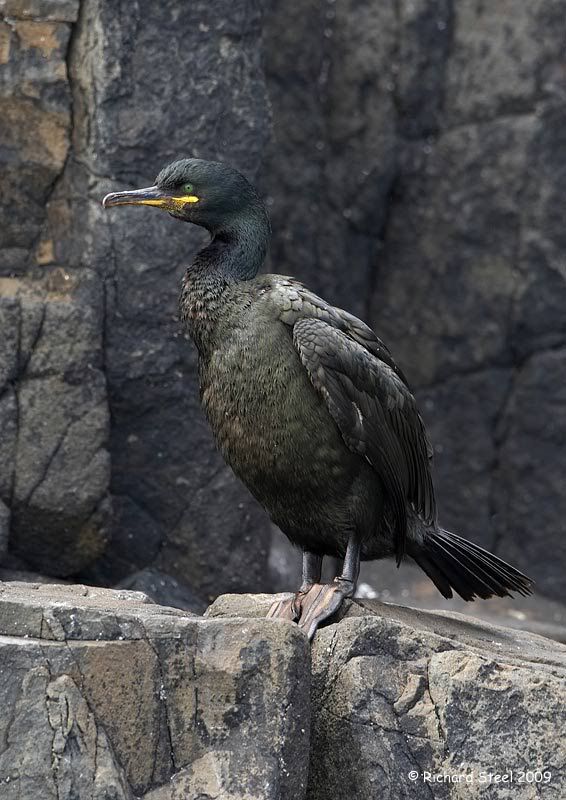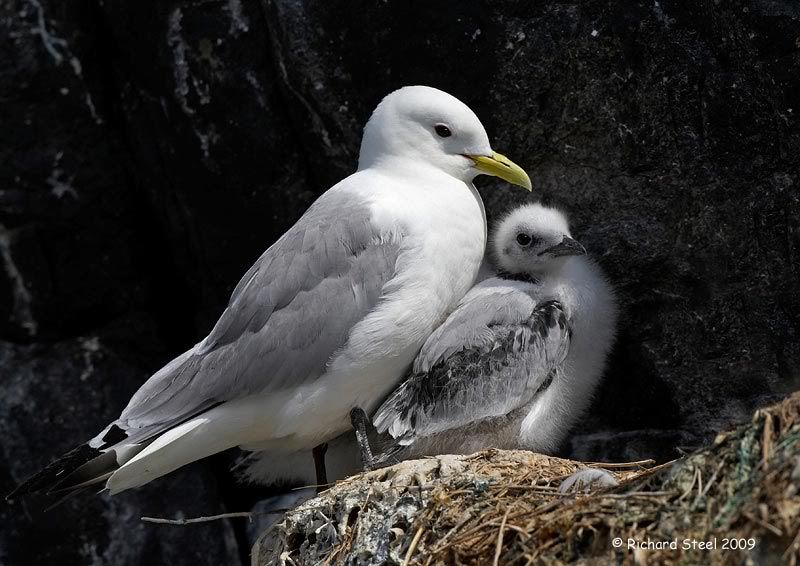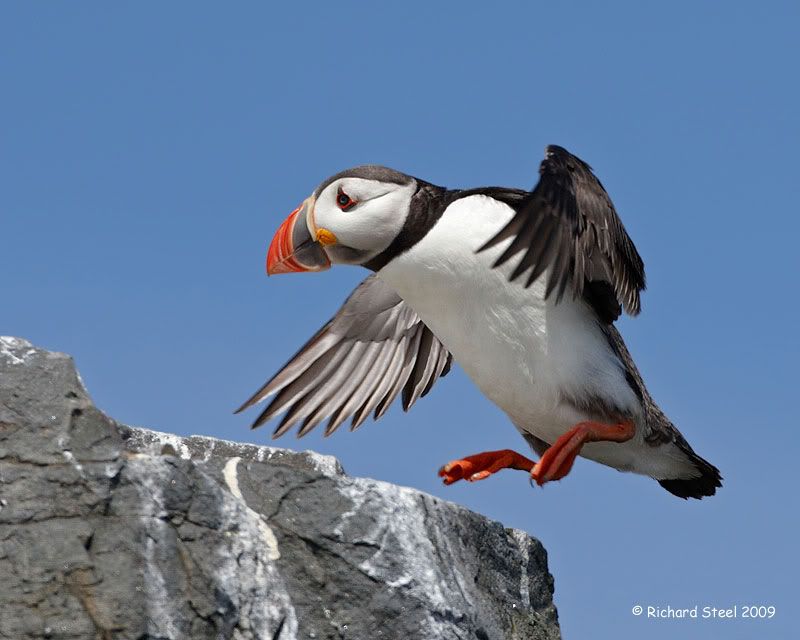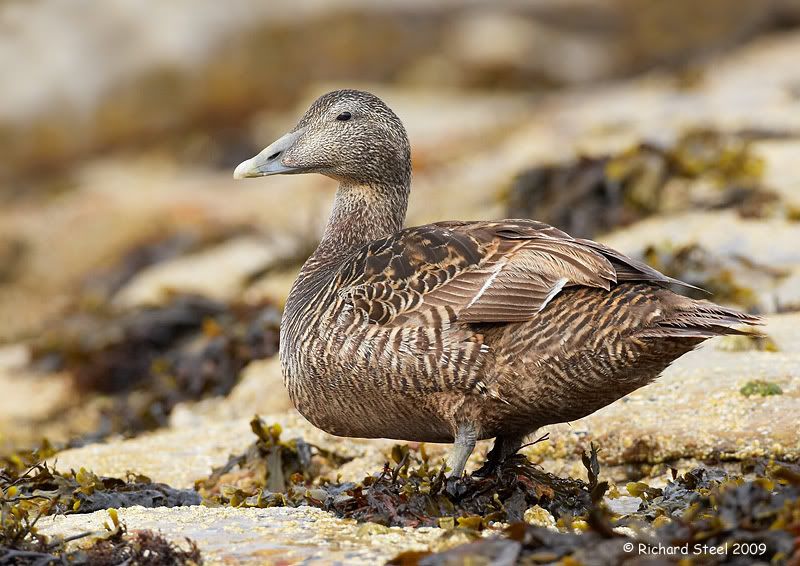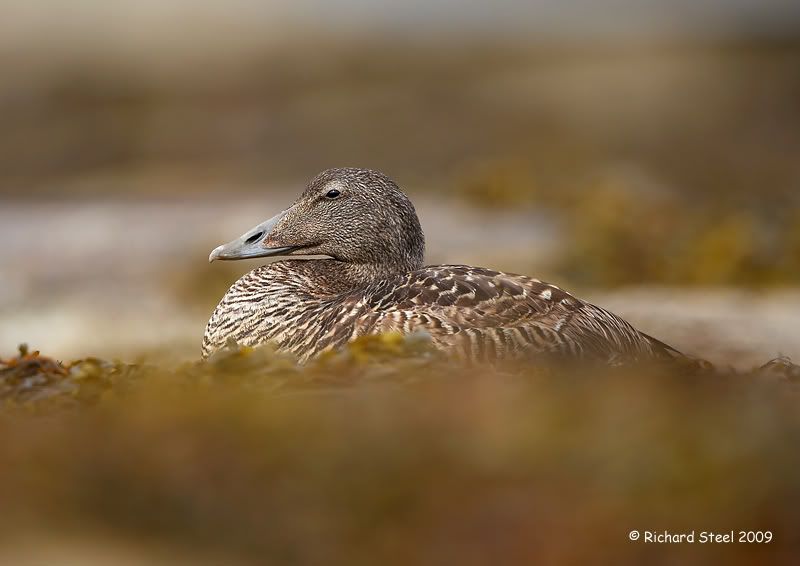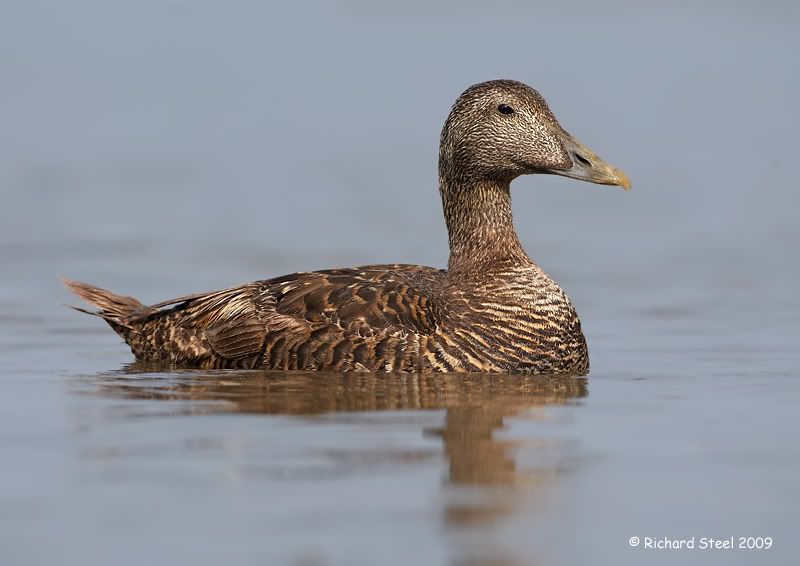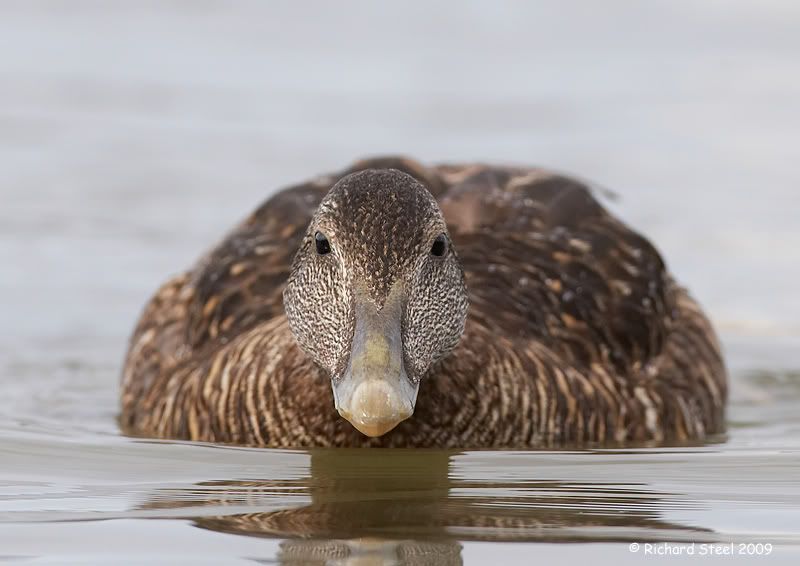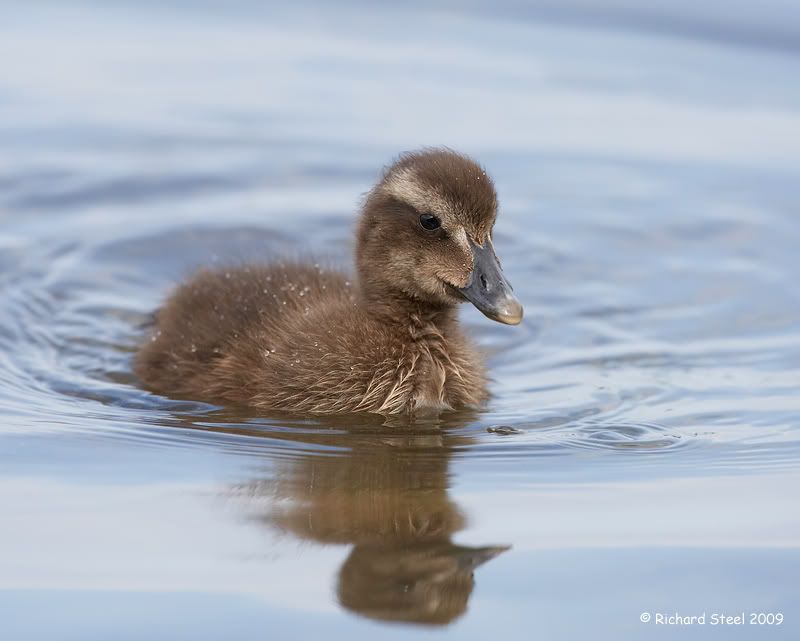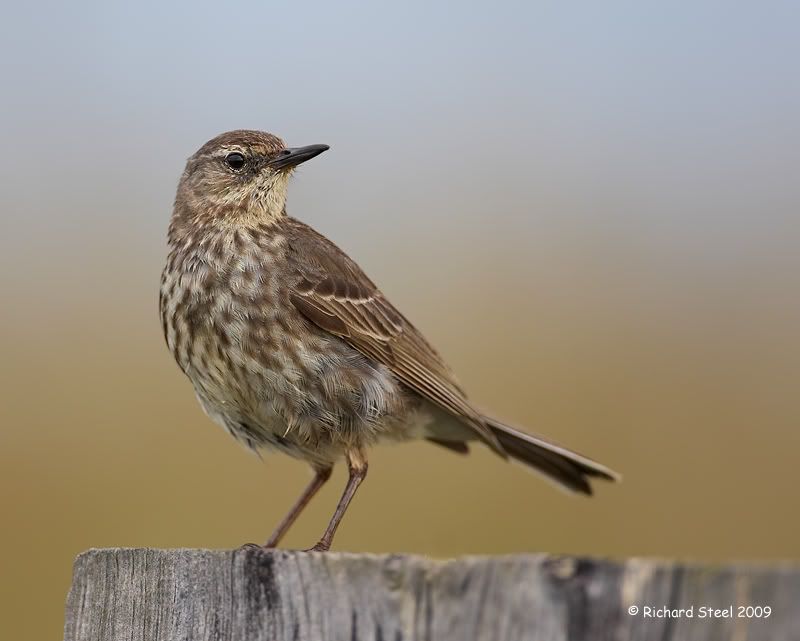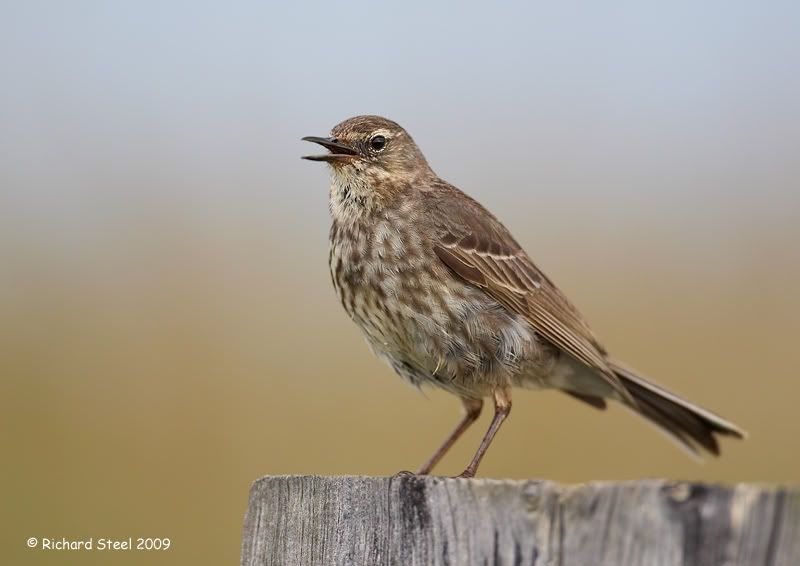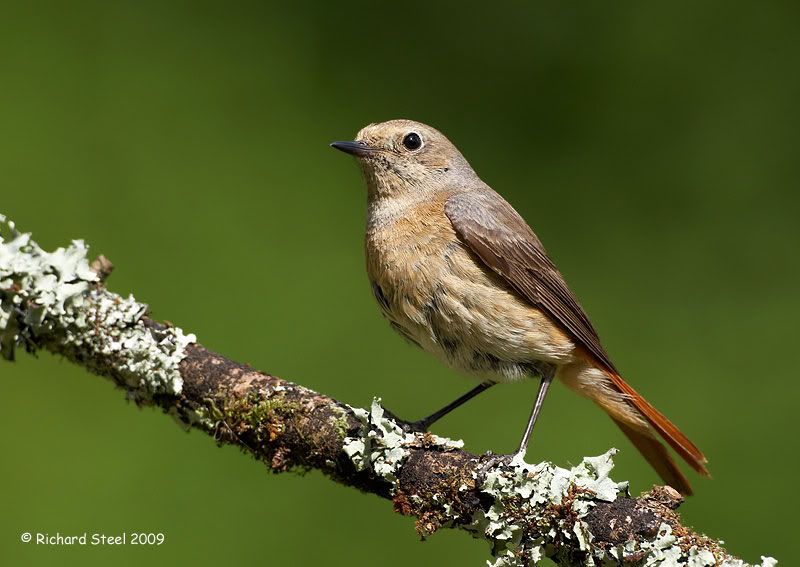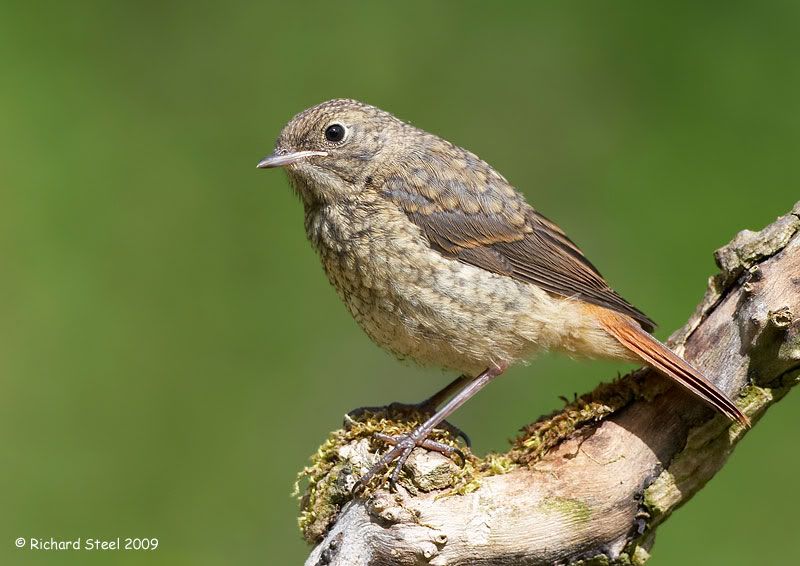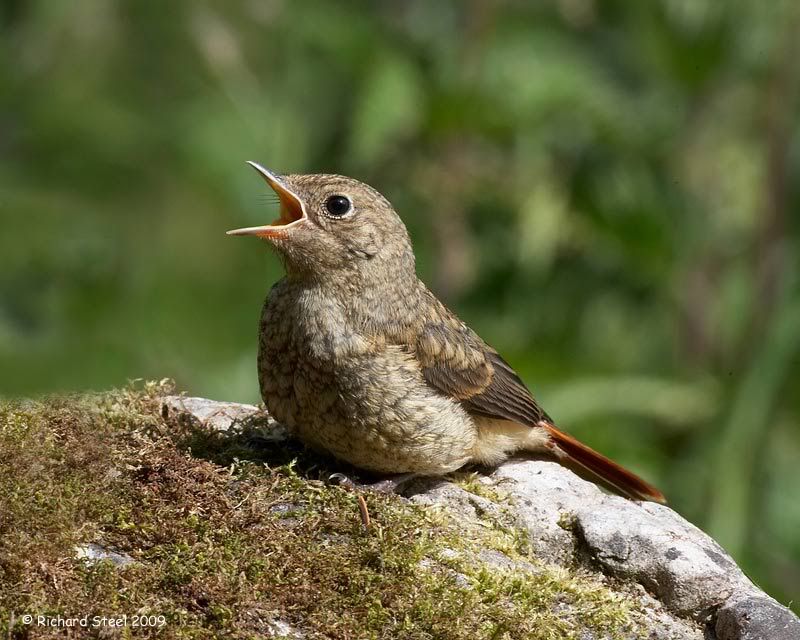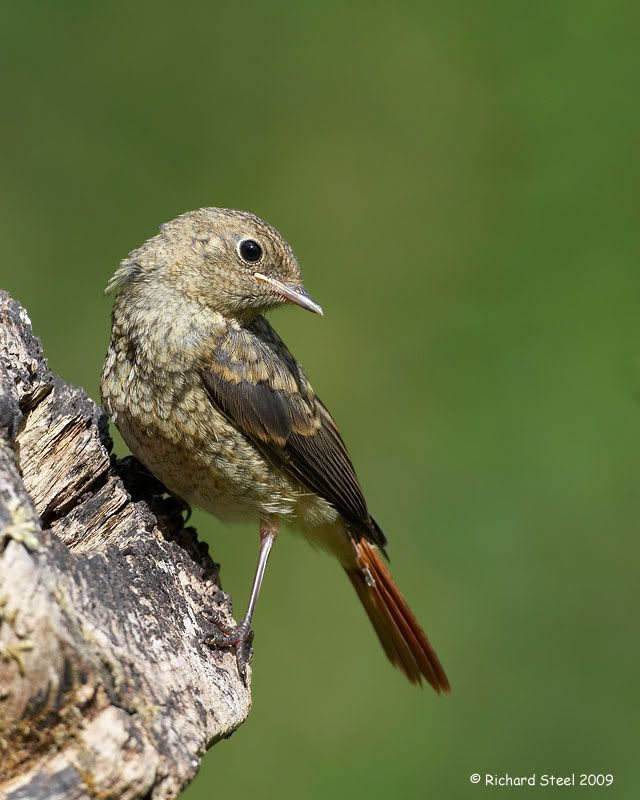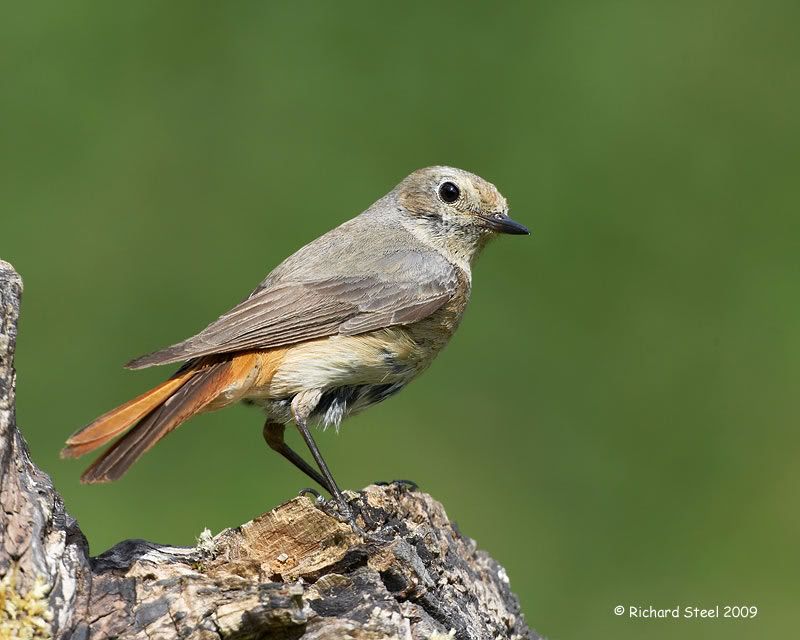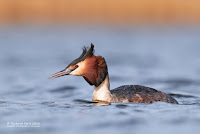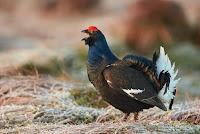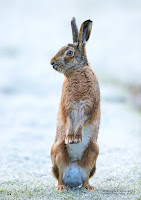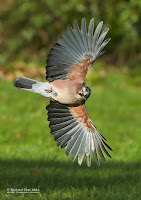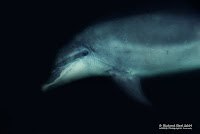Glorious Gulls
I really enjoy photographing sea gulls especially in that soft late in the day light. The gulls have recently been returning from their summer nesting grounds so I took the opportunity to photograph some while still in their summer plumage. They usually lose this plumage very quickly on return.
Starting straight off with a couple of portraits of a Black-headed Gull and Common Gull.
They also make for some great flight subjects with this set taken in a short session one evening after work.
To finish this set a young Lesser Black-Backed Gull in some evening light
The waders are now returning from the north so it is time to switch my attentions.
Friday, July 31, 2009
Thursday, July 23, 2009
Seabird Safari - Part 4
This is my final installment of my recent trip to the Farne Islands. Before I describe the fun that was had on the last stop of the tour on Inner Farne Island, I thought I would post a photograph of a passing Shag so I could devote the rest of this post to my target species on the island.
I had a clear plan for Inner Farne Island , I was not to be distracted by the puffins, and had the 24-70mm wide lens fixed to the camera before my foot had touched the jetty. As you land on Inner Farne the path from the landing area takes you up through an Arctic Tern colony. They tend to take exception to people and constantly attack the visitors who usually tend to quickly pass through the colony. Those without a hat usually come off worse and sometimes there is even some blood shed. The onslaught of the birds is relentless and it is a fairly uncomfortable experience to endue for any length of time. I decided I would try put up with the attacks for a while in order to try and get some photos of the birds in flight with a wide angle lens. Arctic Terns really are stunningly beautiful and elegant birds in flight with their translucent wings and long tail feathers. That is of course if you can get beyond them trying to do a woodpecker impression on your head with a very sharp bill. Interestingly this year they semmed to have developed a new tactic of attacking exposed ears rather than just the head. Some of the photos from this bombardment of birds are shown below:
This photo was taken with the lens at 24mm. The birds come at your so quickly and so close that the camera autofocus has little chance. Getting photos at this distance and with the weaving flight of the birds proved very tricky.
I suppose there is room for just one photograph to bring the trip to the Farnes to a close.
Overall an enjoyable and productive day out on the islands with some very fortunate weather conditions. Unfortunately the following day the planned trip to the Gannets of Bass Rock was cancelled due to the wind blowing up a sea swell. The planning for next years June excursion is already under way and is going to hopefully take me much further a field and northwards.
This is my final installment of my recent trip to the Farne Islands. Before I describe the fun that was had on the last stop of the tour on Inner Farne Island, I thought I would post a photograph of a passing Shag so I could devote the rest of this post to my target species on the island.
I had a clear plan for Inner Farne Island , I was not to be distracted by the puffins, and had the 24-70mm wide lens fixed to the camera before my foot had touched the jetty. As you land on Inner Farne the path from the landing area takes you up through an Arctic Tern colony. They tend to take exception to people and constantly attack the visitors who usually tend to quickly pass through the colony. Those without a hat usually come off worse and sometimes there is even some blood shed. The onslaught of the birds is relentless and it is a fairly uncomfortable experience to endue for any length of time. I decided I would try put up with the attacks for a while in order to try and get some photos of the birds in flight with a wide angle lens. Arctic Terns really are stunningly beautiful and elegant birds in flight with their translucent wings and long tail feathers. That is of course if you can get beyond them trying to do a woodpecker impression on your head with a very sharp bill. Interestingly this year they semmed to have developed a new tactic of attacking exposed ears rather than just the head. Some of the photos from this bombardment of birds are shown below:
This photo was taken with the lens at 24mm. The birds come at your so quickly and so close that the camera autofocus has little chance. Getting photos at this distance and with the weaving flight of the birds proved very tricky.
I suppose there is room for just one photograph to bring the trip to the Farnes to a close.
Overall an enjoyable and productive day out on the islands with some very fortunate weather conditions. Unfortunately the following day the planned trip to the Gannets of Bass Rock was cancelled due to the wind blowing up a sea swell. The planning for next years June excursion is already under way and is going to hopefully take me much further a field and northwards.
Saturday, July 18, 2009
Seabird Safari - Part 3
I had the best of intentions as I stepped of the boat on to the small concrete land stage of Staple Island, with some thoughts of the photos that I wanted to get. However, as soon I arrived at the top of the short path from the boat and caught the sight of puffins at close range the plans quickly dissolved away and 'puffin fever' took over. They are such photogenic birds and very distracting.
In fact they are distracting to the point that I actually photographed little else during the short time on Staple Island.
I did a few flight photographs but the light was awkward.
So in the end I decided on taking some portraits. These two birds made for a colourful dispute.
I am a big fan of the 'over the shoulder look portrait' and it suits puffins particularly well.
To finish off this festival of all things puffin, one particular bird came in with a very full beak of fish and landed at close range and sat their looking a little bemused for about 10 minutes which allowed plenty of time to get some full frame head photographs.
The short time on Staple Island was cut short by 30 minutes by an increasing swell and rapidly moving tide. The next destination was Inner Farne Island for which I had a well formed plan from which no puffin was going to distract me.
I had the best of intentions as I stepped of the boat on to the small concrete land stage of Staple Island, with some thoughts of the photos that I wanted to get. However, as soon I arrived at the top of the short path from the boat and caught the sight of puffins at close range the plans quickly dissolved away and 'puffin fever' took over. They are such photogenic birds and very distracting.
In fact they are distracting to the point that I actually photographed little else during the short time on Staple Island.
I did a few flight photographs but the light was awkward.
So in the end I decided on taking some portraits. These two birds made for a colourful dispute.
I am a big fan of the 'over the shoulder look portrait' and it suits puffins particularly well.
To finish off this festival of all things puffin, one particular bird came in with a very full beak of fish and landed at close range and sat their looking a little bemused for about 10 minutes which allowed plenty of time to get some full frame head photographs.
The short time on Staple Island was cut short by 30 minutes by an increasing swell and rapidly moving tide. The next destination was Inner Farne Island for which I had a well formed plan from which no puffin was going to distract me.
Monday, July 13, 2009
Seabird Safari - Part 2
There were some glum faces sat around the breakfast table as the rain fell heavily outside. Surely we were not going to be hit with poor weather for the second year running, following the mists of last year. Fortunately soon after leaving the harbour quay the rain stopped and the skies started to clear as we headed out towards Staple Island. As usual I was on the look out for any passing birds as we were shipped out to the island but the combination of a crowded rocking boat and fast moving sea birds is never an easy combination. I did manage to get a photograph of a passing gannet. I love they way they skim the water when flying out at sea.
The boat paused briefly to check out some grey seas that had hauled themselves up on to a small area of exposed rocks. They are so much easier to photograph than the birds.
We then went onwards to Staple Island, which I put in the third installment, but had to leave early due to a swell that was developing and fast tidal currents. This meant that the boat had to motor around for about 1.5 hours before we could make the landing on Inner Farne Island. A cormorant drying out its feathers after a fishing expedition.
Another cormorant surfaced at the base of the cliffs with what initally looked like a wrasse but turned out to be a fish known as a Lumpsucker. I always thought these fish were a grey / brown colour.
The smaller and greener Shag were also present perched along the base of the low cliffs.
The light suddenly became very harsh which is probably the worst conditions for trying to photograph kittiwakes, that were nesting along narrow ledges on the cliff face.
To finish off this post in one area where the boat stopped briefly there were a small number of puffins perched along the cliff top, This bird was in the process of jumping between rocks.
There were some glum faces sat around the breakfast table as the rain fell heavily outside. Surely we were not going to be hit with poor weather for the second year running, following the mists of last year. Fortunately soon after leaving the harbour quay the rain stopped and the skies started to clear as we headed out towards Staple Island. As usual I was on the look out for any passing birds as we were shipped out to the island but the combination of a crowded rocking boat and fast moving sea birds is never an easy combination. I did manage to get a photograph of a passing gannet. I love they way they skim the water when flying out at sea.
The boat paused briefly to check out some grey seas that had hauled themselves up on to a small area of exposed rocks. They are so much easier to photograph than the birds.
We then went onwards to Staple Island, which I put in the third installment, but had to leave early due to a swell that was developing and fast tidal currents. This meant that the boat had to motor around for about 1.5 hours before we could make the landing on Inner Farne Island. A cormorant drying out its feathers after a fishing expedition.
Another cormorant surfaced at the base of the cliffs with what initally looked like a wrasse but turned out to be a fish known as a Lumpsucker. I always thought these fish were a grey / brown colour.
The smaller and greener Shag were also present perched along the base of the low cliffs.
The light suddenly became very harsh which is probably the worst conditions for trying to photograph kittiwakes, that were nesting along narrow ledges on the cliff face.
To finish off this post in one area where the boat stopped briefly there were a small number of puffins perched along the cliff top, This bird was in the process of jumping between rocks.
Saturday, July 11, 2009
Seabird Safari - Part 1
At the beginning of this week I headed up to the North-East of England to photograph some sea birds with my friends Steve and Austin. The original intention was a day on the Farnes Islands followed by a visit to Bass Rock on the second day. I will post the resulting photographs over a few posts.
The journey up was a bit tortuous as we decided to go via the Yorkshire Dales to see if any curlew were around on the moorland but having gone up a month later this year they had already disappeared.
First stop on arrival at Seahouses was to check the harbour and beach for Eider Duck. The sun was beaming as we got out the car but soon disappeared.
Given that we were later this year, as we normally visit in early June, the males had dispersed with only one male bird in eclipse plumage drifting around the outer harbour but there were plenty of females and young around. Eider are one of my favourite ducks with the bold monochrome of the males and the intricate patterns of the females. A few photographs to start of the birds resting on the seaweed covered foreshore
Paddling around the harbour area
There were various young eider at different stages of growth, this being one of the smaller ones.
After the harbour we took a walk south to an area of low lying cliff where rock pipit, sand martin, kittiwake and fulmar are present. I decided to concentrate most of my efforts there on the Rock Pipits.
and calling or prehaps more accurately 'pipping'
By this time the rain clouds were gathering fast so it was time to be a rapid rapid retreat towards the hotel.
At the beginning of this week I headed up to the North-East of England to photograph some sea birds with my friends Steve and Austin. The original intention was a day on the Farnes Islands followed by a visit to Bass Rock on the second day. I will post the resulting photographs over a few posts.
The journey up was a bit tortuous as we decided to go via the Yorkshire Dales to see if any curlew were around on the moorland but having gone up a month later this year they had already disappeared.
First stop on arrival at Seahouses was to check the harbour and beach for Eider Duck. The sun was beaming as we got out the car but soon disappeared.
Given that we were later this year, as we normally visit in early June, the males had dispersed with only one male bird in eclipse plumage drifting around the outer harbour but there were plenty of females and young around. Eider are one of my favourite ducks with the bold monochrome of the males and the intricate patterns of the females. A few photographs to start of the birds resting on the seaweed covered foreshore
Paddling around the harbour area
There were various young eider at different stages of growth, this being one of the smaller ones.
After the harbour we took a walk south to an area of low lying cliff where rock pipit, sand martin, kittiwake and fulmar are present. I decided to concentrate most of my efforts there on the Rock Pipits.
and calling or prehaps more accurately 'pipping'
By this time the rain clouds were gathering fast so it was time to be a rapid rapid retreat towards the hotel.
Thursday, July 02, 2009
Return to the Redstarts
I recently decided to have one more session with redstarts. As usual the male quickly put in an appearance. He really is a beautiful bird in prime condition.
He was closely followed by the female.
On this particular session I decided to play around with a 25mm extension tube which has been rattling around neglected in the bottom of my camera bag. The extension tube gives some magnification effect to the lens. The longer the lens the less the magnifying effect but it is still noticeable on the 500mm. This effectively leads to the bird appearing larger within the fame and so the bird occupies a greater number of pixels and as such detail should be improved. The real benefit of the extension tube is that unlike a teleconvertor they contain no glass so there is nothing to reduce image quality, although you do lose a little light with their use.
The real joy of the session was the appearance of three recently fledged young which I have not really had opportunity to photograph properly before and it was great to see the adults had a successful brood. The young redstarts are virtually identical to a young robin except they have a red tail.
They were certainly looking healthy and very active
So I suppose its time to bring the redstart story to close for another year and I will finish off with one last photo of each of the adults.
They all have a long journey ahead of them soon with their trip back to Africa for the winter so here's to wishing them good luck on their voyage.
I recently decided to have one more session with redstarts. As usual the male quickly put in an appearance. He really is a beautiful bird in prime condition.
He was closely followed by the female.
On this particular session I decided to play around with a 25mm extension tube which has been rattling around neglected in the bottom of my camera bag. The extension tube gives some magnification effect to the lens. The longer the lens the less the magnifying effect but it is still noticeable on the 500mm. This effectively leads to the bird appearing larger within the fame and so the bird occupies a greater number of pixels and as such detail should be improved. The real benefit of the extension tube is that unlike a teleconvertor they contain no glass so there is nothing to reduce image quality, although you do lose a little light with their use.
The real joy of the session was the appearance of three recently fledged young which I have not really had opportunity to photograph properly before and it was great to see the adults had a successful brood. The young redstarts are virtually identical to a young robin except they have a red tail.
They were certainly looking healthy and very active
So I suppose its time to bring the redstart story to close for another year and I will finish off with one last photo of each of the adults.
They all have a long journey ahead of them soon with their trip back to Africa for the winter so here's to wishing them good luck on their voyage.
Subscribe to:
Posts (Atom)

